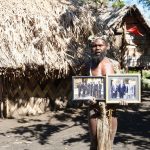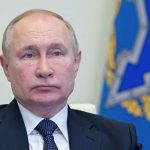Hundreds of British Airway passengers spent months as hostages after officials failed to warn the airline of Iraq’s 1990 invasion of Kuwait, the government has admitted.
BA149 landed on 2 August to refuel despite the foreign office being warned of the movement of Iraqi troops by the then British ambassador to Kuwait.
They were used as human shields, endured sexual violence and mock executions and were forced to have their photographs taken with dictator Saddam Hussein.
Newly released documents – which reveal the lack of warning given to BA – also fail to identify a mysterious group of military-looking men who were on the flight from the UK to Asia.
Fellow passengers and crew have previously speculated they were members of a UK special forces team and that the British government had exploited the aircraft – and their safety – to insert the men into Kuwait.
A businessman who was on the flight responded with incredulity.
“Who on earth were they, then? Members of a rugby team?” asked Barry Manners, now 54, from Kent.
Belarus: More than 400 Iraqi migrants board deportation flight as border tensions rise
Iraq PM Mustafa al Kadhimi survives assassination attempt by drone armed with explosives
Top Islamic State group leader Sami Jasim detained in Iraq, Prime Minister Mustafa al Kadhimi says
“These were serious guys – you only had to look at them. I’m absolutely gobsmacked. I know what I saw going on with that plane. I know they were soldiers.”
Mr Manners was 24 when he boarded the flight ahead of what was meant to be an 18-day holiday with his partner.
Instead, he said he was threatened at gunpoint by some of his captors and spent two years recovering from his ordeal upon his release just before Christmas 1990.
Foreign Secretary Liz Truss, in a statement on the declassified papers, denied the aircraft had been exploited to transport UK special forces.
The foreign secretary also apologised for the failure to disclose until now the fact that an alert from the then British ambassador to Kuwait to the foreign office about the movement of Iraqi troops into Kuwait had not been shared with BA.
She said a line of communication between government officials and airline companies did not exist at the time.
No explanation was given for why it has taken more than three decades for this omission about the sharing of key information to be made public despite the plight of BA149 having attracted intense scrutiny over the years and repeated calls for a public inquiry.
“These files show that the existence of the call [by the ambassador] was not revealed to parliament and the public,” Ms Truss said in a written ministerial statement.
“This failure was unacceptable. As the current secretary of state, I apologise to the House for this, and I express my deepest sympathy to those who were detained and mistreated.”
The cache of files revealed never-seen-before correspondence between then Conservative Prime Minister John Major and then Labour MP John Prescott dated 2 October 1992 about the identity of the mysterious group of men that apparently disembarked from the flight after it landed.
“I can confirm… that there were no British military personnel on board the flight,” Mr Major wrote to the then shadow transport secretary on Downing Street-headed paper.
In her remarks, Ms Truss said the files “are consistent” with previous government responses to speculation about the UK using the aircraft to insert a special forces team.
She quoted a statement from a previous minister for Europe from April 2007 that said: “The government at the time did not attempt in any way to exploit the flight by any means whatever.”
The denial about serving military personnel being on board the flight does not rule out the possibility that the individuals were former servicemen, potentially working as contractors for the UK government or with some other covert, deniable link.
The newly released files did reveal that the UK government had been aware Iraqi forces had crossed the border into Kuwait while the BA flight was in the air – though they had not been aware it marked the start of the full-blown invasion.
Margaret Thatcher, who was prime minister at the time of the incident, had previously told parliament that the aircraft had landed in Kuwait before the invasion began.
Offering clarity on what was known, the then British Ambassador to Kuwait Sir Michael Weston informed the duty officer dealing with emergencies at the then Foreign and Commonwealth Office (FCO) about the movement of Iraqi troops into Kuwait.
This information was shared with the head of the Middle East Department at the Foreign Office, the prime minister’s office, the Ministry of Defence, the Cabinet Office and MI6.
But it was not shared with BA – information that could have prompted the airline to divert its aircraft, preventing the ordeal that its passengers then suffered.






















